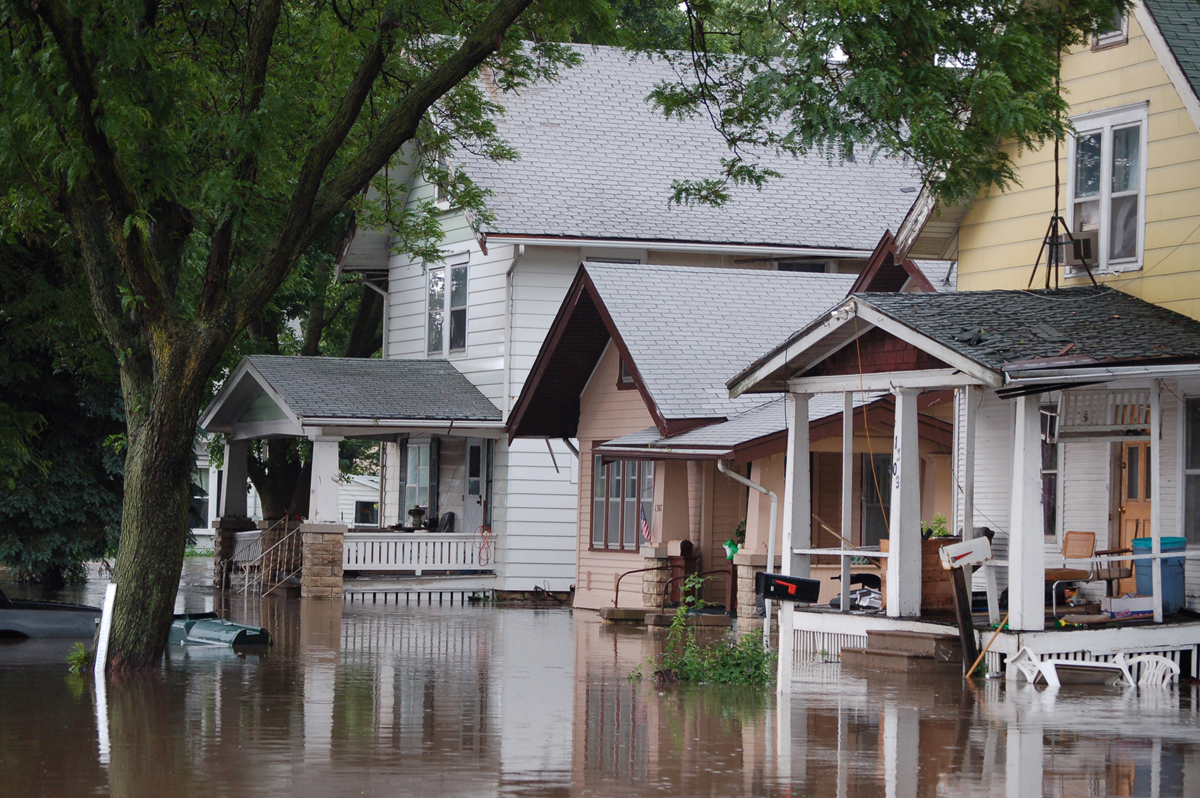Named after the fertile red soil in its river bed, the Red River is deeply intertwined with Louisiana history. Both Shreveport and Bossier City were founded on the banks of the river, as were Alexandria and Pineville. Following the clearing of the Great Raft, the Red River was made navigable and greatly stimulated Louisiana commerce through barge transportations. With abundant supplies of bass and catfish swimming amidst its streams, the Red River is also beloved by Louisiana sportsmen.
But despite its pivotal role in Louisiana, the Red River has not always been kind. Throughout history, Louisianians had to frequently combat floods caused by the Red River. Just recently, record rainfall caused the Red River to reach a level not seen in decades. Around Shreveport, the river peaked at 7 feet above flood stage, just a foot below the 1945 record. Same levels were reached around Alexandria. Countless homes suffered catastrophic damages, leaving many Louisiana homeowners devastated.
The best protection against damages caused by flooding is preventative – purchasing flood insurance. Many homeowners are unaware that standard homeowner’s insurance policies do notcover flood damage. A flood insurance policy can be obtained from the National Flood Insurance Program (NFIP), a program established by Congress in 1968 to help provide means for homeowners to protect themselves.
The NFIP covers up to $250,000 for the structure of the home and $100,000 for personal possessions. Structural damages are calculated using replacement cost, which will pay the amount needed to rebuild or repair the home to the condition it was in prior to the flooding. Damages to personal possessions, however, are calculated using actual cash value, which will only pay the replacement cost minus the depreciations of the possessions. In other words, the older the possessions are, the less value the homeowner will be able to recover.
Homeowners should also be cognizant of a few caveats regarding the NFIP. First, there is a 30-day waiting period before a policy becomes effective. Homeowners should purchase flood insurance well ahead of any potential flooding. An exception to this is if an existing property is refinanced. Second, the NFIP does not cover living expenses incurred from relocation while the home is being repaired. Third, homeowners should be wary of NFIP policy’s maximum coverage limit. Although the average flood claim for U.S. homeowners is about $30,000, homeowners with expensive homes or valuable personal possessions should consider purchasing excess flood insurance from private insurers to cover any potential damage that exceeds the NFIP’s limit.
Under the NFIP, homeowners must file a Proof of Loss form within 60 days of a flood. For the homeowners that suffered damages by the Red River flooding in May, the deadline is fast approaching. Although Louisiana Insurance Commissioner Jim Donelon has requested the Federal Emergency Management Agency to extend the 60-day filing deadline, that request has yet to be granted. Homeowners should not rely upon the possible extension and instead should file their claims as quickly as possible.
To file a claim with the NFIP, homeowners should contact the NFIP Claims Call Center at 1-800-621-3362. Homeowners should be ready to provide evidence of damages to an insurance adjuster. The commissioner recommends photographs of all damaged property, including discarded items and standing floodwater levels. Homeowners are also advised to list every personal item that were lost or damaged, along with their date of purchase, value, and attach receipts for these items if possible. After reviewing the evidence, an adjuster will provide homeowners with the Proof of Loss form, which substantiates the insurance claim. Payments will be made by the NFIP only after receiving the Proof of Loss form.
Floods are the most common natural disaster in the United States and can be caused by hurricanes, overtopped levees, poor drainage system or even extended rainfall. Considering that homes are usually the largest investment people make, Louisiana homeowners should be well advised to contact their NFIP providers and discuss various flood insurance policies that best fit their needs.
*Special thanks to Luke Zhu, JD/MBA Candidate, for his research and assistance in drafting this article.


